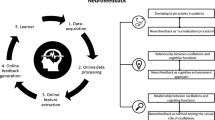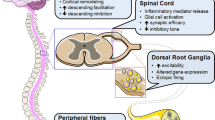Abstract
Deep brain stimulation (DBS) of the subthalamic nucleus (STN) is an effective treatment for motor impairments in Parkinson’s disease (PD) but its effect on the motivational regulation of action control is still not fully understood. We investigated whether DBS of the STN influences the ability of PD patients to act for anticipated reward or loss, or whether DBS improves action execution independent of motivational valence. 16 PD patients (12 male, mean age = 58.5 ± 10.17 years) treated with bilateral STN-DBS and an age- and gender-matched group of healthy controls (HC) performed a go/no-go task whose contingencies explicitly decouple valence and action. Patients were tested with (ON) and without (OFF) active STN stimulation. For HC, there was a benefit in performing rewarded actions when compared to actions that avoided punishment. PD patients showed such a benefit reliably only when STN stimulation was ON. In fact, the relative behavioral benefit for go for reward over go to avoid losing was stronger in the PD patients under DBS ON than in HC. In PD patients, rather than generally improving motor functions independent of motivational valence, modulation of the STN by DBS improves action execution specifically when rewards are anticipated. Thus, STN-DBS establishes a reliable congruency between action and reward (“Pavlovian congruency”) and remarkably enhances it over the level observed in HC.



Similar content being viewed by others
References
Limousin P, Krack P, Pollak P, Benazzouz A, Ardouin C, Hoffmann D, Benabid AL (1998) Electrical stimulation of the subthalamic nucleus in advanced Parkinson’ disease. N Eng J Med 339:1105–1111
Ballanger B, van Eimeren T, Moro E, Lozano AM, Hamani C, Boulinguez P, Pellecchia G, Houle S, Poon YY, Lang AE, Strafella AP (2009) Stimulation of the subthalamic nucleus and impulsivity: release your horses. Ann Neurol 66:817–824
Guitart-Masip M, Economides M, Huys QJ, Frank MJ, Chowdhury R, Duzel E, Dayan P, Dolan RJ (2014) Differential, but not opponent, effects of l-DOPA and citalopram on action learning with reward and punishment. Psychopharmacology 231:955–966
Guitart-Masip M, Huys QJM, Fuentemilla L, Dayan P, Duzel E, Dolan RJ (2012) Go and no-go learning in reward and punishment: interactions between affect and effect. NeuroImage 62:154–166
Frank MJ, Seeberger LC, O’Reilly RC (2004) By carrot or by stick: cognitive reinforcement learning in parkinsonism. Science 306:1940–1943
Salamone JD, Correa M, Mingote SM, Weber SM (2005) Beyond the reward hypothesis: alternative functions of nucleus accumbens dopamine. Curr Opin Pharmacol 5:34–41
Berridge KC, Robinson TE (1998) What is the role of dopamine in reward: hedonic impact, reward learning, or incentive salience? Brain Res Rev 28:309–369
Frank MJ (2006) Hold your horses: a dynamic computational role for the subthalamic nucleus in decision making. Neural Netw 19:1120–1136
Fleming SM, Thomas CL, Dolan RJ (2010) Overcoming status quo bias in the human brain. PNAS 107:6005–6009
Guitart-Masip M, Fuentemilla L, Bach DR, Huys QJM, Dayan P, Dolan RJ, Duzel E (2011) Action dominates valence in anticipatory representations in the human striatum and dopaminergic midbrain. J Neurosci 31:7867–7875
Elias WJ, Fu KM, Frysinger RC (2007) Cortical and subcortical brain shift during stereotactic procedures. J Neurosurg 107:983–988
Hristova A, Lyons K, Tröster AI, Pahwa R, Wilkinson SB, Koller WC (2000) Effect and time course of deep brain stimulation of the globus pallidus and subthalamus on motor features of Parkinson’s disease. Clin Neuropharmacol 23:208–211
Lopiano L, Torre E, Benedetti F, Bergamasco B, Perozzo P, Pollo A, Rizzone M, Tavella A, Lanotte M (2003) Temporal changes in movement time during the switch of the stimulators in Parkinson’s disease patients treated by subthalamic nucleus stimulation. Eur Neurol 50:94–99
Chowdhury R, Guitart-Masip M, Lambert C, Dolan R, Duzel E (2013) Structural integrity of the substantia nigra and subthalamic nucleus determines the flexibility of instrumental learning in old age. Neurobiol Aging 34:2261–2270
Schroeder U, Kuehler A, Haslinger B, Erhard P, Fogel W, Tronnier VM, Lange KW, Boecker H, Ceballos-Baumann AO (2002) Subthalamic nucleus stimulation affects striato-anterior cingulate cortex circuit in a response conflict task: a PET study. Brain 125:1995–2004
Wylie SA, Ridderinkhof KR, Elias WJ, Frysinger RC, Bashore TR, Downs KE, van Wouwe NC, van den Wildenberg WP (2010) Subthalamic nucleus stimulation influences expression and suppression of impulsive behavior in Parkinson’s disease. Brain 133:3611–3624
Hershey T, Revilla FJ, Wernle A, Gibson PS, Dowling JL, Perlmutter JS (2004) Stimulation of STN impairs aspects of cognitive control in PD. Neurology 62:1110–1114
Temel Y, Kessels A, Tan S, Topdag A, Boon P, Visser-Vandewalle V (2006) Behavioural changes after bilateral subthalamic stimulation in advanced Parkinson disease: a systematic review. Parkinsonism Relat Disord 12:265–272
Castner JE, Copland DA, Silburn PA, Coyne TJ, Sinclair F, Chenery HJ (2007) Lexical-semantic inhibitory mechanisms in Parkinson’s disease as a function of subthalamic stimulation. Neuropsychologia 45:3167–3177
Schroeder U, Kuehler A, Hennenlotter A, Haslinger B, Tronnier VM, Krause M, Pfister R, Sprengelmeyer R, Lange KW, Ceballos-Baumann AO (2004) Facial expression recognition and subthalamic nucleus stimulation. J Neurol Neurosurg Psychiatry 75:648–650
Serranová T, Sieger T, Dušek P, Růžička F, Urgošík D, Růžička E, Valls-Solé J, Jech R (2013) Sex, food and threat: startling changes after subthalamic stimulation in Parkinson’s disease. Brain 6:740–745
Lardeux S, Pernaud R, Paleressompoulle D, Baunez C (2009) Beyond the reward pathway: coding reward magnitude and error in the rat subthalamic nucleus. J Neurophysiol 102:2526–2537
Lardeux S, Paleressompoulle D, Pernaud R, Cador M, Baunez C (2013) Different populations of subthalamic neurons encode cocaine versus sucrose reward and predict future error. J Neurophysiol 100:1497–1510
Baunez C, Dias C, Cador M, Amalric M (2005) The subthalamic nucleus exerts opposite control on cocaine and ‘natural’ rewards. Nat Neurosci 8:484–489
Acknowledgments
This work was funded by DFG-SFB 779/TPA 2 (T.Z., H.-J.H. and ED), TPA 3 (H.-J.H.) TPA 7 (ED) and TP A11 (J.V. and H.-J.H.), and DFG He 1531/11-1 (J.V. and H.-J.H.).
Conflicts of interest
CW & TZ report no disclosure. IG received honoraria for speaking from GlaxoSmithKline, TEVA pharma, Medronic and St. Jude Medical. JV is member of the Medtronic Inc. advisory board and receives occasionally honoraria. MGM reports no disclosure. HJH reports no disclosure. ED reports no disclosure.
Ethical standard
This study has been approved by the local ethics committee (University of Magdeburg, Germany) and has been performed in accordance with the ethical standards of the 1964 Declaration of Helsinki.
Author information
Authors and Affiliations
Corresponding author
Additional information
C. Wagenbreth and T. Zaehle contributed equally.
Rights and permissions
About this article
Cite this article
Wagenbreth, C., Zaehle, T., Galazky, I. et al. Deep brain stimulation of the subthalamic nucleus modulates reward processing and action selection in Parkinson patients. J Neurol 262, 1541–1547 (2015). https://doi.org/10.1007/s00415-015-7749-9
Received:
Revised:
Accepted:
Published:
Issue Date:
DOI: https://doi.org/10.1007/s00415-015-7749-9




